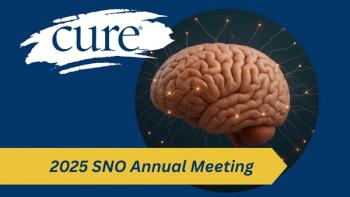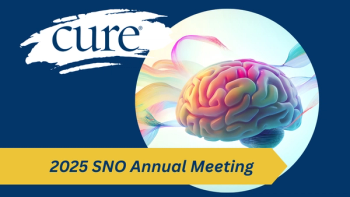Among patients with recurrent grade 3 IDH-mutated astrocytoma, the addition of eflornithine to Gleostine (lomustine) was associated with clinically meaningful overall survival (OS) and progression-free survival (PFS) benefits when compared with treatment via Gleostine alone, study results have shown.
Updated data from the phase 3 STELLAR study were presented during the 2025 Society of Neuro-Oncology Annual Meeting.
In the updated analysis, investigators reclassified patients from the original intention-to-treat (ITT) population (343 patients) using updated molecular classification to identify a subset of patients (57%) who had grade 3/4, IDH-mutated astrocytoma.
Glossary
Progression-Free Survival (PFS): This measures how long a patient lives without their cancer getting worse (progressing).
Overall Survival (OS): The length of time from the start of diagnosis or treatment until a patient dies.
Karnofsky Performance Status (KPS): This is a score (from 0 to 100) that doctors use to measure a patient's general well-being and their ability to perform daily activities.
Myelosuppression: This is a side effect where a treatment, like chemotherapy or radiation, slows down or stops the production of new blood cells in the bone marrow (the soft tissue inside your bones).
Patients with grade 3 or 4 disease who received the combination (116 patients) achieved a median OS of 28.5 months compared with 22.3 months among those who received Gleostine monotherapy (119 patients). The median PFS values were 12.3 months and 7.3 months, respectively. Additionally, findings from a blinded independent central MRI review of PFS among patients with grade 3 disease revealed that the PFS benefit with eflornithine was consistent with the investigator-assessed PFS benefit.
“This updated classification based on [World Health Organization] 2021 [criteria] of the STELLAR population confirms the benefit of eflornithine in grade 3, IDH-mutant, CDK-intact population,” Dr. Howard Colman explained during the presentation. “The blinded independent review of the MRI results confirms the PFS benefit observed by investigators and the high correlation between the effect of PFS and OS in this subgroup. This is the first demonstration of a clinically significant OS and PFS benefit in a randomized study in this population.”
Colman is a Jon M. Huntsman Presidential Professor in the Department of Neurosurgery, a member of the multidisciplinary Brain Tumor Research Team and the leader of the Center for Neurologic Cancers at Huntsman Cancer Institute (HCI) at the University of Utah. He is also an HCI investigator and a member of the Experimental Therapeutics program.
How was the STELLAR study designed?
STELLAR was an open-label study that enrolled patients a surgical or biopsy-proven diagnosis of WHO grade 3 anaplastic astrocytoma. Patients were also required to have experienced their first instance of disease progression or recurrence at least six months after the completion of external beam radiation therapy (ERBT). Prior treatment with ERBT and Temodar (temozolomide) plus chemotherapy prior to the first instance of disease progression or recurrence was required, as was a Karnofsky Performance Status (KPS) of at least 70 and adequate organ function.
“The STELLAR trial started in 2016 under the prior WHO diagnostic criteria, [and] this created several difficulties, but [an] extensive effort was made to gather historical archival tissue to reclassify the population based on 2021 WHO criteria,” Colman explained.
Patients were randomly assigned to receive eflornithine plus Gleostine (arm A) or Gleostine monotherapy (arm B). Patients in arm A received eflornithine at 2.8 g/m2 on a two-weeks-on, one-week-off schedule for up to 24 months in combination with Gleostine at 90 mg/m2 once on day 15 and once every six weeks during the eflornithine off weeks for up to six cycles or 12 months, whichever came first. Patients in arm B received Gleostine at 100 mg/m2 once every six weeks for up to six cycles or 12 months, whichever came first.
At baseline, the median age in the ITT population (343 patients) was 43 years. Most patients were 45 years old or younger (56%), male (60.9%), underwent one or two surgical resections (86%), and had a KPS of at least 90 (68.0%). The median time from the last dose of radiation therapy to random assignment was 26.6 months.
Previously reported data for the ITT population showed that patients treated with the combination (172 patients) achieved a median OS of 23.4 months versus 20.3 months for those given Gleostine alone (171 patients). The median PFS was 8.9 months versus 7.2 months, respectively.
What was the safety profile of the combination?
In terms of safety, patients in the combination arm experienced grade 3 (severe) or higher treatment-emergent side effects related to eflornithine or Gleostine at respective rates of 50.9% and 45.6%. Grade 3 or higher treatment-emergent side effects of relevance were reported at a rate of 63.9% and included myelosuppression (39.6%), hearing loss (23.7%) and diarrhea (9.5%). Serious treatment-emergent side effects related to eflornithine or Gleostine were reported at rates of 7.7% and 3.6%, respectively.
In the monotherapy arm, grade 3 or higher treatment-emergent side effects related to Gleostine occurred in 33.3% of patients. Grade 3 or higher TEAEs of relevance (30%) included myelosuppression (28.7%), seizure (1.3%) and nausea (0.7%). Serious treatment-emergent side effects related to study treatment were also reported (2.7%).
“[The] toxicities were consistent with prior eflornithine; gastrointestinal [side effects] and decreased hearing were the notable toxicities,” Colman said.
References
- “Updated results of phase 3 STELLAR trial: eflornithine improves overall survival and blinded independent central review determined progression free survival in patients with recurrent WHO 2021 grade 3 IDH-mutant astrocytoma” by Dr. Howard Colman et al. Presented at: 2025 SNO Annual Meeting; November 19-23, 2025; Honolulu, HI. Abstract CTNI-58.
- “Study to evaluate eflornithine + lomustine vs lomustine in recurrent anaplastic astrocytoma (AA) patients (STELLAR);” https://clinicaltrials.gov/study/NCT02796261
For more news on cancer updates, research and education, don’t forget to subscribe to CURE®’s newsletters here.






